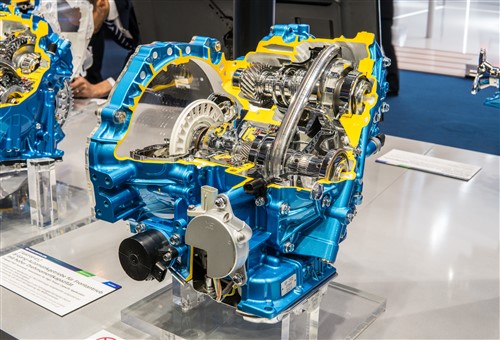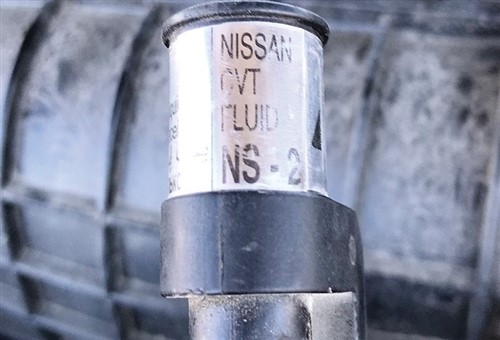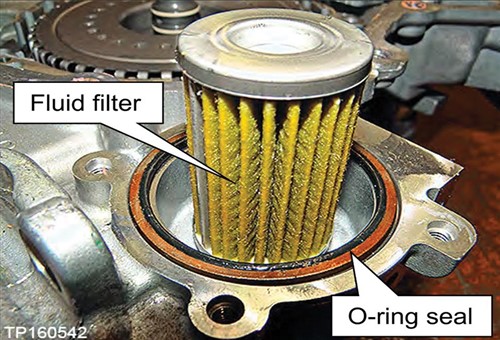
In Part 1 of this two-part article, we discussed the basic operating principles of Nissan’s CVT transmissions. Now, in Part 2, we will take a closer look at some service procedures, as well as some common faults you can expect to see on Nissan CVT transmissions. However, not all CVT issues and failures are caused by improper service procedures, but it helps to be aware of the correct service procedures to forestall the possibility of improper service procedures being the cause of CVT issues and failures. Having said that, let us start by listing the-
Although Nissan has been developing and refining their CVT transmissions since 1992, up[to the point where Nissan is the only manufacturer that offers a CVT that can handle the power of a 3.5L V6 engine, the sad truth is that Nissan CVT transmissions are now only marginally more reliable than they were in 1992. In fact, several class action lawsuits have been filed against Nissan in the USA, but despite this, Nissan has, in the words of one specialist law firm (in the USA), “… [Nissan has] ignored the defect and consumer complaints—all [the] while continuing to implement the defective CVTs in their new vehicles.”
It is not for this writer to agree or disagree with the opinion(s) of specialist consumer protection attorneys, but based on this writer's own observations and experience with Nissan CVT transmissions, you can expect to see one or more of the symptoms/issues listed below if you work on a variety of CVT-equipped Nissan vehicles regularly-
Limited space precludes a comprehensive discussion on the possible/probable causes of the issues listed above, but we can do the next best thing, which is to discuss service procedures that could cause some or all of the issues listed above if they are not performed correctly. Let us start with-

Image source: https://automotivetechinfo.com/2021/11/keys-to-understanding-and-servicing-nissan-cvt-transmissions/
There is some confusion and controversy regarding fluid replacements on Nissan CVTs, which means that the inspection and replacement of fluid are often intentionally overlooked or ignored. Some of the confusion involves uncertainty about fluid change intervals and what type of fluid to use while most of the controversy involves uncertainty about whether (or not) the fluid in Nissan's CVT transmissions should be replaced at all.
The fact is, though, that Nisan prescribes the periodic replacement of the fluid in all their CVTs, but there are instances when the fluid must be replaced before its due date/mileage. Such instances include but are not limited to, when the fluid has seriously overheated or when the fluid life monitor indicates that a fluid replacement is required for any one or more of a variety of reasons.
On a purely practical level, however, changing the fluid in a Nissan CVT transmission is largely similar to changing the fluid on a conventional automatic transmission. Here is a short rundown on the procedure-
WARNING: Nissan has approved only two types of fluid for use in their CVT transmissions, these fluids being-
Be aware that mixing the two fluids, or using the wrong fluid can cause catastrophic transmission damage, including transmission failure, so be sure to consult OEM service information for the vehicle to be sure you are using the correct transmission fluid, which brings us to-

Image source: https://automotivetechinfo.com/wp-content/uploads/2021/11/Fluid-Filter.jpg
Some Nissan CVT transmissions have a plain fine mesh metal filter screen inside the transmission, while others are fitted with an internal cartridge-type filter, while still others are fitted with an external cartridge filter. Note that replacing these filters is typically not required during routine CVT transmission fluid changes, but be sure to consult the vehicle’s service schedule regarding CVT fluid filter replacements.
The transmission fluid life monitor
All CVT-equipped Nissan models use a software-based fluid life monitor system that is incorporated into the transmission control module. This system uses a complex algorithm that takes the following parameters into account-
-and several other factors. As a practical matter, these factors are the basis of a complex equation the TCM uses to calculate the rate at which the transmission fluid deteriorates or degrades. Therefore, resetting the fluid life monitor after a fluid replacement is a crucially important aspect of servicing a Nissan CVT. Note, however, that this can only be done with Nissan’s CONSULT III software since the reset alerts the TCM that the transmission fluid has been replaced, which begs this question-
Nissan's transmission fluid monitor is based on something called the fluid deterioration replacement number, which is typically set at a value of 210 000, which refers to the number of times the fluid can exceed 90 degrees C before the fluid life monitor will display a notification that the fluid must be replaced.
However, it is important to note that CVT transmissions or CVT transmission components are known to fail long before the fluid deterioration replacement number reaches 210 000, meaning that it is necessary to inspect the transmission fluid visually for signs of degradation at least every time the vehicle receives an engine oil change. This is especially important if the vehicle is used for towing, or if the vehicle traverses hilly or mountainous terrain regularly. Here is what to look out for when inspecting Nissan CVT transmission fluid-
|
Fluid Condition |
Probable Cause |
Action Required |
|
Fluid resembles varnish |
CVT fluid is degraded due to high temperatures |
Replace the CVT fluid and check both the CVT and the vehicle for malfunctions (wiring harnesses, cooler pipes, etc. |
|
Fluid appears milky white or cloudy |
Fluid is contaminated with water |
Replace the CVT fluid and check for sites of water ingress |
|
Large amounts of metal wear particles present in fluid |
Extreme wear of sliding parts within CVT |
Replace the CVT fluid and verify the (im)proper operation of the CVT |
Observing and following the proper fluid replacement procedures will go a long way towards preventing premature failures of CVT transmissions on Nissan vehicles, but as might be expected, keeping Nissan CVT transmissions alive is a little more complicated than filling them with the correct fluid, which leaves us with-
In a follow-up article, we will discuss some specific customer complaints and concerns, as well as some repair and programming procedures that will help you avoid expensive and embarrassing comebacks after some types of repairs on Nissan CVT transmissions don’t work out as well as you expected them to.